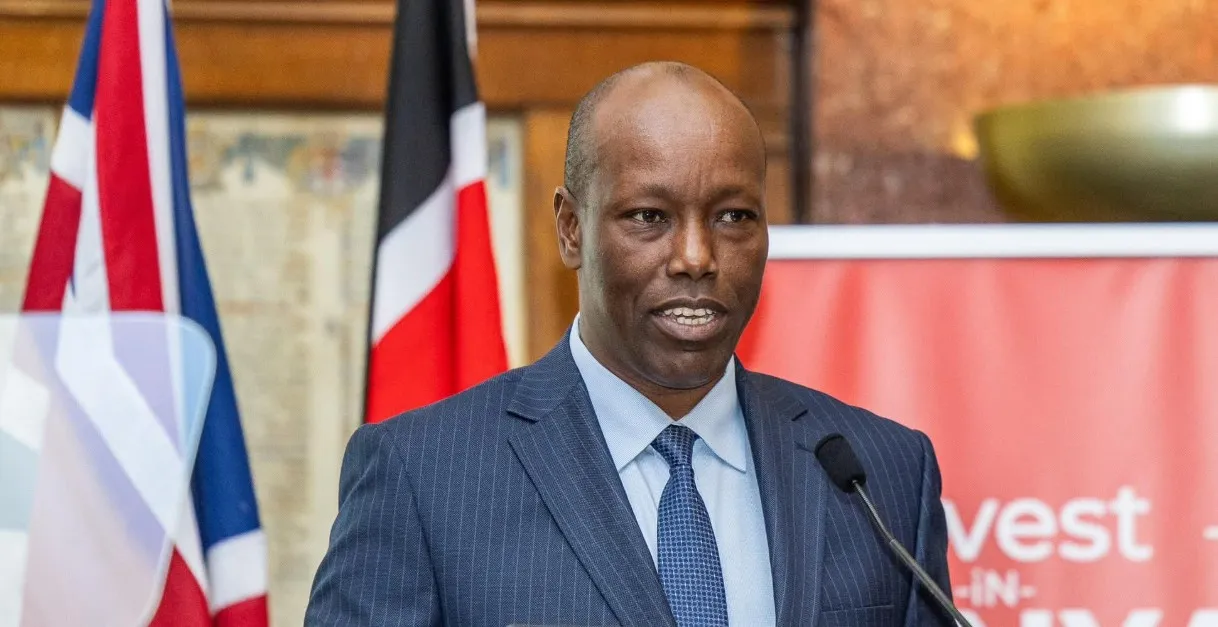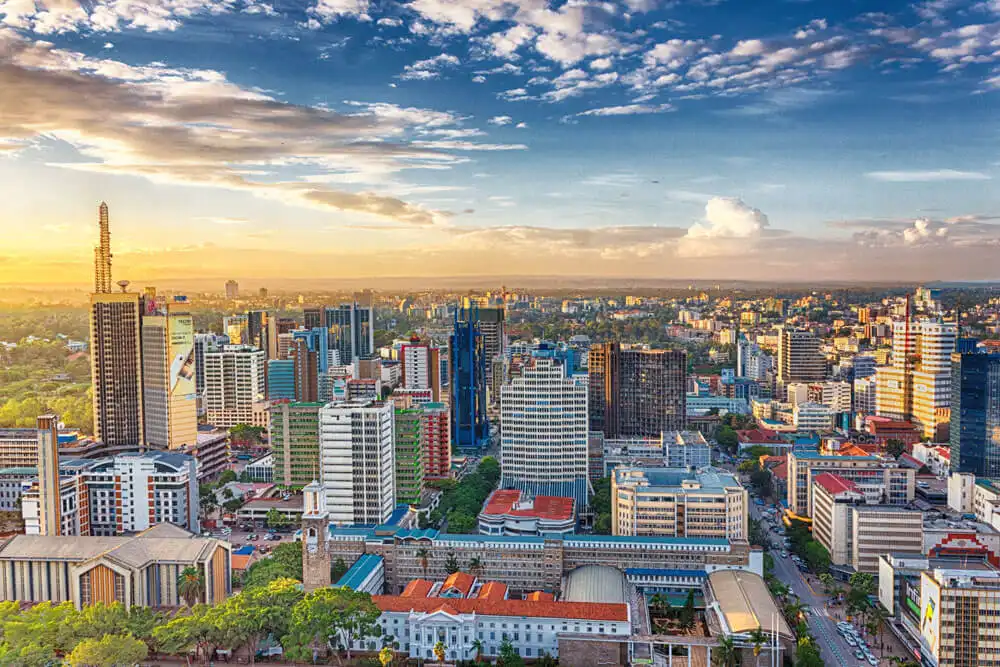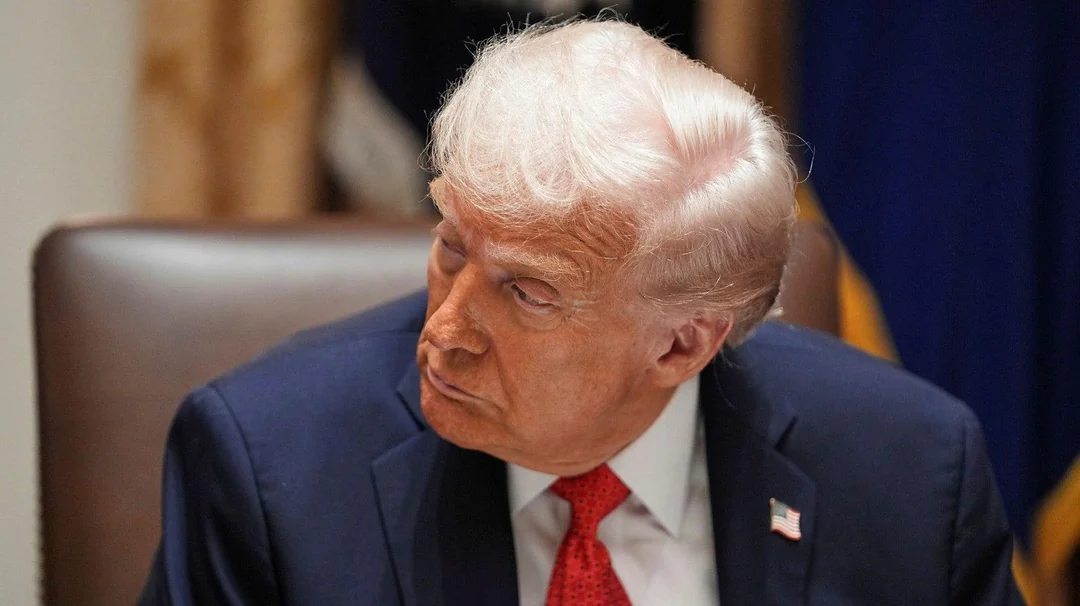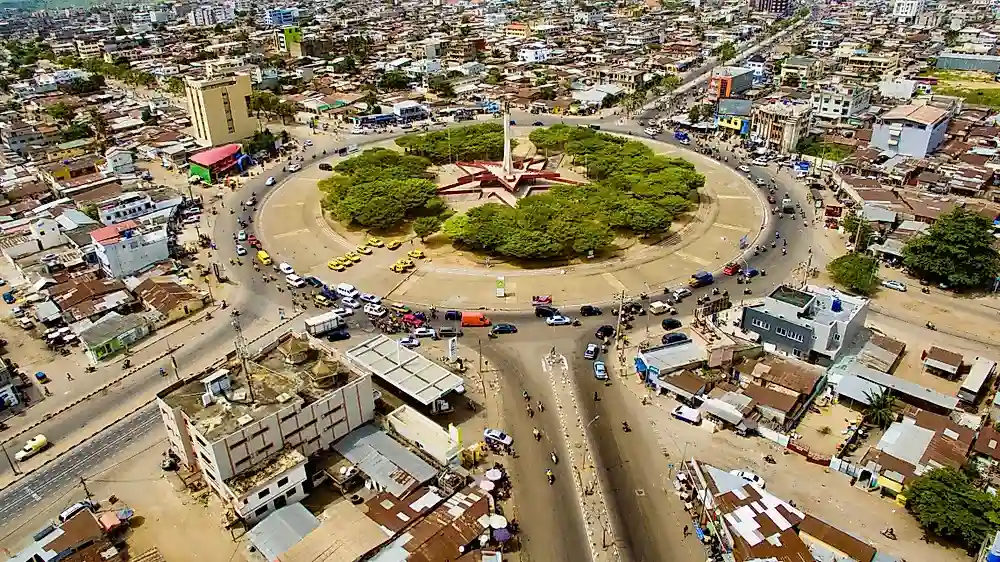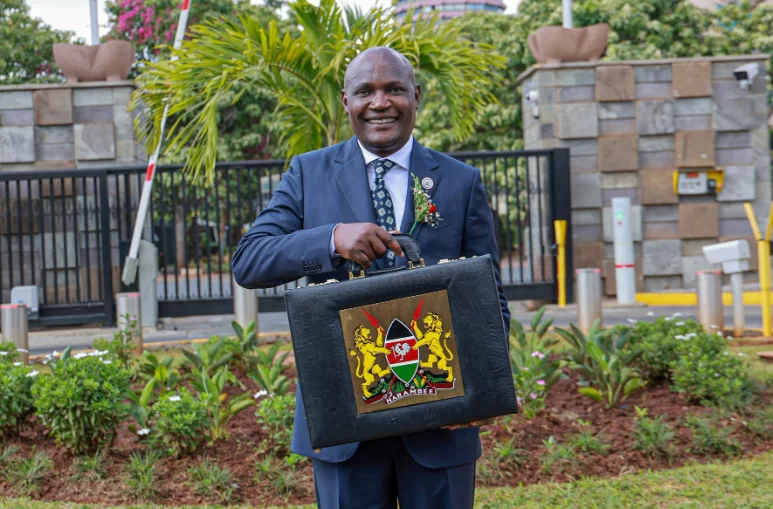As Kenyans prepare for fresh Saba Saba Day protests on Monday, the government has sounded a strong alarm regarding potential economic repercussions. Senior officials caution that repeated demonstrations, particularly those marred by violence and property destruction, could severely erode investor confidence and push the East African economic powerhouse towards a precarious path of decline. This looming confrontation highlights a deep-seated tension between constitutional rights to protest and the imperative of maintaining economic stability in a nation already grappling with significant challenges.
Trade Cabinet Secretary Lee Kinyanjui has been at the forefront of these warnings, emphasizing that business disruptions and widespread property damage witnessed in past protests have painted Kenya as an unstable and unpredictable environment for investors. His concerns resonate with a business community that has repeatedly borne the brunt of civil unrest, leading to significant financial losses and a chilling effect on both local and foreign investment. This article delves into the historical significance of Saba Saba, the government’s economic warnings, the nature of recent protests, the grievances fueling public discontent, and the broader implications for Kenya’s economic future.
The Enduring Legacy of Saba Saba: A Historical Context
To understand the weight of the upcoming Saba Saba protests, it is crucial to revisit the historical roots of this significant date in Kenya’s political calendar. Saba Saba, meaning “Seven Seven” in Swahili, commemorates the historic events of July 7, 1990. This day marked a pivotal moment in Kenya’s struggle for multiparty democracy, a direct challenge to the authoritarian rule of the late former President Daniel Arap Moi and his KANU (Kenya African National Union) government, which had maintained a de facto one-party state since 1982.
In the late 1980s and early 1990s, Kenya was gripped by growing discontent over political repression, human rights abuses, and economic mismanagement. Calls for political pluralism intensified, led by a brave group of opposition figures, lawyers, and civil society activists. Key figures such as Kenneth Matiba, a former cabinet minister, and Charles Rubia, another prominent politician, spearheaded the movement. They sought to hold a public rally at Nairobi’s Kamukunji grounds on July 7, 1990, to press for the repeal of Section 2A of the Constitution, which had entrenched single-party rule.
Despite government bans and severe warnings, thousands of Kenyans defied the authorities, leading to widespread demonstrations, particularly in Nairobi and other major towns. The government’s response was brutal, with police using excessive force, resulting in numerous deaths, injuries, and arbitrary arrests. Many pro-democracy advocates, including Raila Odinga, who would later become a prominent opposition leader, were detained.
The Saba Saba protests, though violently suppressed, proved to be a turning point. They galvanized public opinion, drew international condemnation of the Moi regime, and ultimately contributed to the repeal of Section 2A in December 1991, paving the way for multiparty elections in 1992. Saba Saba thus became a symbol of resilience, the power of collective action, and the enduring fight for democratic freedoms in Kenya.
Today, Saba Saba Day is observed as a moment of reflection on Kenya’s democratic journey. However, it has also become a recurring date for political protests, with opposition groups often using the historical significance of July 7th to rally support for their current grievances against the government. The planned demonstrations on Monday, July 7, 2025, are a direct continuation of this legacy, albeit under vastly different political and economic circumstances.
Government’s Economic Warning: A Looming Crisis?
Trade Cabinet Secretary Lee Kinyanjui’s recent statements underscore the government’s deep concern over the economic fallout from sustained unrest. His warnings are not merely rhetorical; they reflect tangible fears about Kenya’s economic stability and its attractiveness as an investment destination.
Erosion of Investor Confidence
Kinyanjui emphasized that business disruptions and property damage witnessed in past protests have painted Kenya as an unstable environment for investors. Investor confidence is a fragile commodity, heavily influenced by perceptions of political stability, rule of law, and economic predictability. When a country experiences repeated civil unrest, potential investors, both local and foreign, perceive heightened risks. These risks include:
- Political Risk: Uncertainty about government stability, policy consistency, and the potential for expropriation or nationalization.
- Operational Risk: Disruptions to business operations, supply chains, and access to markets due to protests, curfews, or insecurity.
- Property Risk: The direct threat of damage, looting, or destruction of assets.
- Reputational Risk: A negative international image that deters tourism and trade.
According to a 2024 report by the Kenya National Bureau of Statistics (KNBS), political instability and insecurity were cited by 35% of surveyed foreign investors as significant deterrents to expanding operations or making new investments in Kenya. While specific figures for protest-related economic losses are often hard to quantify comprehensively, the Kenya Private Sector Alliance (KEPSA) estimated that the 2023 anti-government protests led to daily losses of approximately KES 3 billion (approximately $20 million), primarily due to business closures, reduced productivity, and damage to property. Over several days of protests, these losses quickly accumulated into tens of billions of shillings.
The Cost of Repeated Shutdowns
CS Kinyanjui lamented that the “cost of shutting down businesses for days to accommodate protests makes Kenya seem unreliable and a dangerous place to invest in.” This “cost of shutting down” extends far beyond immediate revenue losses for businesses. It includes:
- Lost Productivity: Employees unable to reach workplaces, factories halting production, and services grinding to a halt.
- Supply Chain Disruptions: Goods unable to be transported, leading to shortages and increased costs for consumers. The Port of Mombasa, a vital trade gateway for East Africa, has experienced significant slowdowns during past periods of unrest, impacting regional trade.
- Damage to Infrastructure: Roads, public transport, and communication networks can be affected, further impeding economic activity.
- Impact on the Informal Sector: Kenya has a vast informal economy, comprising millions of daily wage earners, hawkers, and small traders. These individuals often live hand-to-mouth, and even a single day of business closure can mean lost income, inability to feed their families, and a spiral into deeper poverty. Unlike larger businesses, they often lack the capital or insurance to recover from losses.
- Reduced Tax Revenue: A slowdown in economic activity directly translates to reduced tax collection for the government, further straining national finances already burdened by debt.
The CS’s call for “calm and introspection” and a plea to “refrain from actions that are divisive and potentially dangerous” underscores the government’s anxiety about a “race to the bottom” that could pull the entire nation down.
The Anatomy of Dissent: Grievances and the Nature of Protests
While the government highlights economic risks, the planned Saba Saba protests are a manifestation of deep-seated public dissatisfaction. The National Alternative Alliance (NAA) has explicitly declared its intention to rally Kenyans, citing widespread dissatisfaction with President William Ruto’s leadership. Their primary grievance: “There is nothing that is working except corruption.”
Fueling the Fire: Public Grievances
The NAA’s statement encapsulates a range of frustrations felt by many Kenyans:
- Cost of Living Crisis: This is arguably the most pressing issue. Kenyans have been grappling with persistently high prices for essential goods and services, including food, fuel, and electricity. Inflation has eroded purchasing power, making daily life increasingly difficult for ordinary citizens. While the government attributes some of this to global factors, critics point to domestic policies and taxation as exacerbating the problem.
- High Taxation: The government’s fiscal policies, particularly new taxes and levies introduced in recent budgets, have been met with strong public resistance. The Finance Bill 2024, for instance, sparked widespread protests, particularly among the youth (often referred to as Gen Z), due to proposed taxes on digital services, mobile money transactions, and other essential items. These protests, which gained significant momentum through social media, demonstrated a new level of civic engagement and a willingness to challenge government policies directly.
- Corruption: Perceptions of rampant corruption within government institutions remain a major source of public anger. The NAA’s claim that “nothing is working except corruption” reflects a deep cynicism about governance and the equitable distribution of national resources.
- Unemployment: High rates of youth unemployment continue to be a pressing issue, contributing to social unrest and a sense of hopelessness among a significant demographic.
- Governance Concerns: Broader concerns about democratic space, accountability, and the responsiveness of leadership to public demands also fuel the protest movement.
The Hijacking of Protests: A Growing Concern
CS Kinyanjui’s warning that “what often begins as peaceful protests are now being hijacked by criminal elements” is a recurring concern in Kenya. While the Constitution protects the right to peaceful assembly, recent demonstrations have regrettably descended into chaos, characterized by:
- Looting and Vandalism: Business owners in Nairobi, particularly around the OTC area and other commercial hubs, have reported significant losses due to shops being broken into and goods stolen.
- Property Damage: Beyond looting, there have been instances of shops being set ablaze and public infrastructure damaged.
- Fear Among Entrepreneurs: The unpredictable nature of these events creates an environment of fear, forcing businesses to close preemptively or invest heavily in security measures.
Following the wave of destruction and chaos that marred the June 25 protests last month, business owners are taking drastic measures. Many traders have confirmed they will not open their shops on July 7 due to security concerns. Memories are still fresh from the June 25 events when goons looted shops and set some ablaze. Despite plans to remain closed, many shop owners have reinforced their premises using thick metal sheets and welded bars, determined to safeguard their livelihoods. Others are relocating stock to their homes in the estates, while some have even mobilized themselves to stay near their shops in groups to deter potential looters, expressing exhaustion from repeatedly rebuilding from scratch.
Security, Rights, and the Rule of Law
The government’s response to the planned protests also involves the National Police Service (NPS) and its interpretation of the legal framework surrounding public gatherings.
NPS Stance and Legal Framework
NPS spokesperson Muchiri Nyaga stated that they had not received any formal notice regarding the planned protests. He warned that “unauthorised demonstrations often descend into chaos, resulting in property damage and public disorder.”
In Kenya, the Public Order Act governs public gatherings and processions. While Article 37 of the Constitution of Kenya guarantees the right to peaceful and unarmed assembly, demonstration, picketing, and petitioning, it also stipulates that this right must be exercised “peacefully and without weapons.” The Public Order Act requires organizers of public gatherings to notify the police in advance, allowing authorities to ensure public safety and order. However, opposition groups often argue that these notification requirements are used by the police to suppress legitimate dissent.
The CS Kinyanjui’s emphasis that “while the Constitution protects the right to protest, the violent turn of recent demonstrations undermines the very law that guarantees this freedom” highlights this tension. The government’s position is that the right to protest does not extend to actions that endanger lives or destroy property.
Safeguarding Human Rights and Civil Liberties
Concerns about the conduct of protests and the response of law enforcement have also drawn attention from human rights organizations. The Kenya Human Rights Commission (KHRC), a prominent civil society organization, has often documented instances of police brutality and excessive force during protests. The recent incident where CCTV exposed how goons violently invaded KHRC offices ahead of Saba Saba protests raised serious alarms about attempts to intimidate civil society. The Law Society of Kenya (LSK) and the Police Reforms Working Group (PRWG) condemned this act, underscoring the importance of protecting civic space and the rule of law.
The debate around protests in Kenya often revolves around balancing the constitutional right to protest with the need to maintain public order and protect property. Critics argue that the government’s focus on economic damage sometimes overshadows the underlying grievances and the right of citizens to express dissent.
Deeper Economic Implications: Beyond Immediate Losses
The economic impact of sustained political instability and protests in Kenya extends far beyond the immediate losses incurred by businesses. It has long-term implications for the country’s development trajectory.
Impact on Key Economic Sectors
- Tourism: Kenya’s tourism sector is a major foreign exchange earner and employer. Travel advisories issued by foreign governments due to civil unrest can lead to significant cancellations of bookings, impacting hotels, tour operators, airlines, and local communities dependent on tourism. The Kenya Tourism Board (KTB) has repeatedly warned about the fragility of the sector to perceptions of insecurity.
- Foreign Direct Investment (FDI): As highlighted by CS Kinyanjui, investor confidence is paramount. According to the UNCTAD World Investment Report 2024, while FDI flows to Africa saw a modest increase, countries perceived as politically unstable often struggle to attract and retain significant foreign capital. New investments are deterred, and existing investors may consider divesting or relocating operations to more stable environments. This directly impacts job creation, technology transfer, and economic diversification.
- Trade and Logistics: Disruptions to transport networks, particularly roads leading to and from major commercial centers and the Port of Mombasa, can severely impede trade. This affects both domestic commerce and Kenya’s role as a regional trade hub for landlocked neighbors like Uganda, Rwanda, and South Sudan. Supply chain bottlenecks lead to higher costs for businesses and consumers.
- Financial Markets: Political instability can lead to volatility in the Nairobi Securities Exchange (NSE), with investors pulling out their capital, leading to a decline in stock prices. The Kenyan shilling can also come under pressure, exacerbating inflation and making imports more expensive.
- Small and Medium Enterprises (SMEs): SMEs are the backbone of Kenya’s economy, accounting for a significant portion of employment and GDP. They are often the most vulnerable during protests, lacking the financial buffers or insurance coverage of larger corporations. Repeated losses can force them to close permanently, leading to job losses and a broader economic slowdown.
Long-Term Development Goals
Kenya has ambitious development goals, including achieving middle-income status by 2030 under Vision 2030. This vision relies heavily on sustained economic growth, increased investment, and a stable business environment. Persistent political instability and the associated economic disruptions pose a significant threat to realizing these long-term aspirations. It diverts government resources from development projects to security management and post-protest recovery efforts.
Conclusion: A Nation at a Crossroads
The upcoming Saba Saba Day protests present Kenya with a critical juncture. On one hand, they represent the enduring spirit of democratic expression and a public desperate for solutions to pressing economic hardships and governance concerns. On the other, the government’s warnings highlight the severe economic consequences of violent dissent, threatening to undermine investor confidence and derail the nation’s development trajectory.
The challenge for Kenya lies in finding a delicate balance: upholding the constitutional right to protest while ensuring that demonstrations remain peaceful and do not inflict undue harm on the economy and livelihoods. This requires not only responsible conduct from protesters and effective, rights-respecting crowd control from the police but also a genuine commitment from the government to address the underlying grievances that fuel public anger. Dialogue, transparency, and accountability are crucial for de-escalating tensions and fostering a more stable and prosperous future for all Kenyans. As CS Kinyanjui urged, it is a moment for “calm and introspection,” to reflect on the collective consequences of actions and to halt any “race to the bottom” that could jeopardize the nation’s progress. The eyes of both Kenyans and the international community will be closely watching how the nation navigates this critical period.
Ready to take your career to the next level? Join our dynamic courses: ACCA, HESI A2, ATI TEAS 7 , HESI EXIT , NCLEX – RN and NCLEX – PN, Financial Literacy!🌟 Dive into a world of opportunities and empower yourself for success. Explore more at Serrari Ed and start your exciting journey today! ✨
photo source: Google
By: Montel Kamau
Serrari Financial Analyst
7th July, 2025
Article, Financial and News Disclaimer
The Value of a Financial Advisor
While this article offers valuable insights, it is essential to recognize that personal finance can be highly complex and unique to each individual. A financial advisor provides professional expertise and personalized guidance to help you make well-informed decisions tailored to your specific circumstances and goals.
Beyond offering knowledge, a financial advisor serves as a trusted partner to help you stay disciplined, avoid common pitfalls, and remain focused on your long-term objectives. Their perspective and experience can complement your own efforts, enhancing your financial well-being and ensuring a more confident approach to managing your finances.
Disclaimer: This article is for informational purposes only and does not constitute financial advice. Readers are encouraged to consult a licensed financial advisor to obtain guidance specific to their financial situation.
Article and News Disclaimer
The information provided on www.serrarigroup.com is for general informational purposes only. While we strive to keep the information up to date and accurate, we make no representations or warranties of any kind, express or implied, about the completeness, accuracy, reliability, suitability, or availability with respect to the website or the information, products, services, or related graphics contained on the website for any purpose. Any reliance you place on such information is therefore strictly at your own risk.
www.serrarigroup.com is not responsible for any errors or omissions, or for the results obtained from the use of this information. All information on the website is provided on an as-is basis, with no guarantee of completeness, accuracy, timeliness, or of the results obtained from the use of this information, and without warranty of any kind, express or implied, including but not limited to warranties of performance, merchantability, and fitness for a particular purpose.
In no event will www.serrarigroup.com be liable to you or anyone else for any decision made or action taken in reliance on the information provided on the website or for any consequential, special, or similar damages, even if advised of the possibility of such damages.
The articles, news, and information presented on www.serrarigroup.com reflect the opinions of the respective authors and contributors and do not necessarily represent the views of the website or its management. Any views or opinions expressed are solely those of the individual authors and do not represent the website's views or opinions as a whole.
The content on www.serrarigroup.com may include links to external websites, which are provided for convenience and informational purposes only. We have no control over the nature, content, and availability of those sites. The inclusion of any links does not necessarily imply a recommendation or endorsement of the views expressed within them.
Every effort is made to keep the website up and running smoothly. However, www.serrarigroup.com takes no responsibility for, and will not be liable for, the website being temporarily unavailable due to technical issues beyond our control.
Please note that laws, regulations, and information can change rapidly, and we advise you to conduct further research and seek professional advice when necessary.
By using www.serrarigroup.com, you agree to this disclaimer and its terms. If you do not agree with this disclaimer, please do not use the website.
www.serrarigroup.com, reserves the right to update, modify, or remove any part of this disclaimer without prior notice. It is your responsibility to review this disclaimer periodically for changes.
Serrari Group 2025








